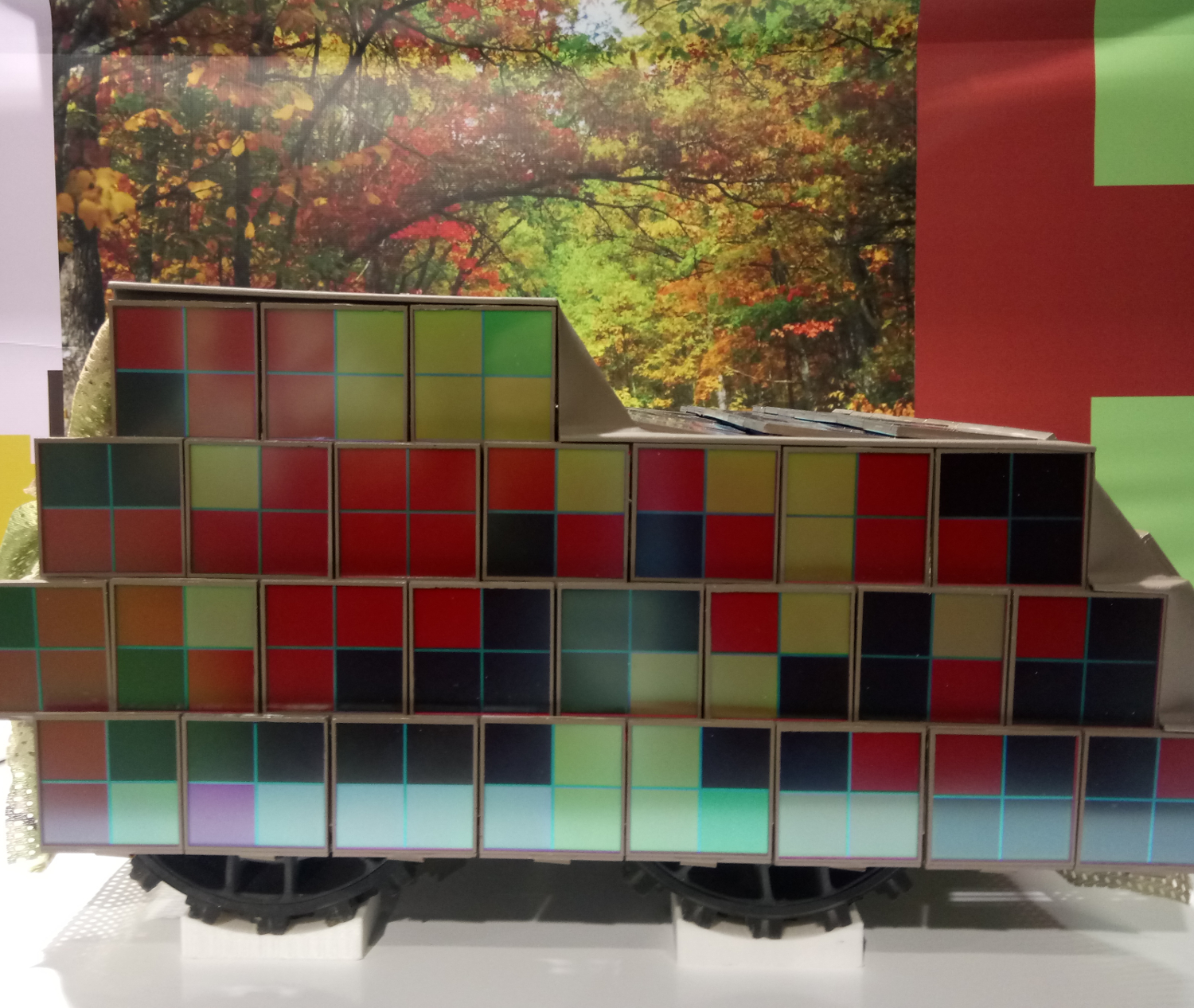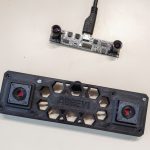Military vehicles are getting a new look for improved camouflage
I’MTech is dedicating a series of articles to success stories from research partnerships supported by the Télécom & Société Numérique Carnot Institute (TSN), to which IMT Atlantique belongs.
[divider style=”normal” top=”20″ bottom=”20″]
 How can military vehicles be made more discreet on the ground? This is the question addressed by the Caméléon project of the Directorate General of Armaments (DGA), involving Nexter group and IMT Atlantique in the framework of the Télécom & Société numérique Carnot Institute. Taking inspiration from the famous lizard, researchers are developing a high-tech skin able to replicate surrounding colors and patterns.
How can military vehicles be made more discreet on the ground? This is the question addressed by the Caméléon project of the Directorate General of Armaments (DGA), involving Nexter group and IMT Atlantique in the framework of the Télécom & Société numérique Carnot Institute. Taking inspiration from the famous lizard, researchers are developing a high-tech skin able to replicate surrounding colors and patterns.
Every year on July 14, the parades on the Champs Élysées show off French military vehicles in forest colors. They are covered in a black, green and brown pattern for camouflage in the wooded landscapes of Europe. Less frequently seen on the television are specific camouflages for other parts of the world. Leclerc tanks, for example, may be painted in ochre colors for desert areas, or grey for urban operations. However, despite this range of camouflage patterns available, military vehicles are not always very discreet.
“There may be significant variations in terrain within a single geographical area, making the effectiveness of camouflage variable,” explains Éric Petitpas, Head of new protection technologies specializing in land defense systems at Nexter Group. Adjusting the colors to the day’s mission is not an option. Each change of paint requires the vehicle to be immobilized for several days. “It slows down reaction time when you want to dispatch vehicles for an external operation,” underlines Eric Petitpas. To overcome this lack of flexibility, Nexter has partnered with several specialized companies and laboratories, including IMT Atlantic, to help develop a dynamic camouflage. The objective is to be able to equip vehicles with technology that can adapt to its surroundings in real time.
This project, named Caméléon, was initiated by the Directorate General of Armaments (DGA) and “is a real scientific challenge“, explains Laurent Dupont, a researcher in optics at IMT Atlantique (member of the Télécom & Société numérique Carnot Institute). For scientists, the challenge lies first and foremost in fully understanding the problem. Stealth is based on the enemy’s perception. It therefore depends on technical aspects (contrast, colors, brightness, spectral band, pattern etc.) “We have to combine several disciplines, from computer science to colorimetry, to understand what will make a dynamic camouflage effective or not,” the researcher continues.
Stealth tiles
The approach adopted by the scientists is based on the use of tiles attached to the vehicles. A camera is used to record the surroundings, and an image analysis algorithm identifies the colors and patterns representative of the environment. A suitable pattern and color palette are then displayed on the tiles covering the vehicle to replicate the colors and patterns of the surrounding environment. If the vehicle is located in an urban environment, for example, “the tiles will display grey, beige, pink, blue etc. with vertical patterns to simulate buildings in the distance” explains Éric Petitpas.
To change the color of the tiles, the researchers use selective spectral reflectivity technology. Contrary to what could be expected, it is not a question of projecting an image onto the tile as though it were a TV screen. “The color changes are based on a reflection of external light, selecting certain wavelengths to display as though choosing from the colors of the rainbow,” explains Éric Petitpas. “We can selectively choose which colors the tiles will reflect and which colors will be absorbed,” says Laurent Dupont. The combination of colors reflected at a given point on the tile generates the color perceived by the onlooker.
A prototype of the new “Caméléon” camouflage was presented at the 2018 Defense Innovation Forum
This technology was demonstrated at the 2018 Defense Innovation Forum dedicated to new defense technology. A small robot measuring 50 centimeters long and covered in a skin of Caméléon tiles was presented. The consortium now wants to move on to a true-to-scale prototype. In addition to needing further development, the technology must also adapt to all types of vehicles. “For the moment we are developing the technology on a small-scale vehicle, then we will move on to a 3m² prototype, before progressing to a full-size vehicle,” says Éric Petitpas. The camouflage technology could thus be quickly adapted to other entities – such as infantrymen, for example.
New questions are emerging as technology prototypes prove their worth, opening up new opportunities to further the partnership between Nexter and ITM Atlantic that was set up in 2012. Caméléon is the second upstream study program of the DGA in which IMT Atlantic has taken part. On the technical side, researchers must now ensure the scaling up of tiles capable of equipping life-size vehicles. A pilot production line for these tiles, led by Nexter and E3S, a Brest-based SME, has been launched to meet the program’s objectives. The economic aspect should not be forgotten either. Tile covering will inevitably be more expensive than painting. However, the ability to adapt the camouflage to all types of environment is a major operational advantage that doesn’t require immobilizing the vehicle to repaint it. There are plenty of new challenges to be met before we see stealth vehicles in the field… or rather not see them!
[divider style=”normal” top=”20″ bottom=”20″]
A guarantee of excellence in partnership-based research since 2006
The Télécom & Société Numérique Carnot Institute (TSN) has been partnering with companies since 2006 to research developments in digital innovations. With over 1,700 researchers and 50 technology platforms, it offers cutting-edge research aimed at meeting the complex technological challenges posed by digital, energy and industrial transitions currently underway in in the French manufacturing industry. It focuses on the following topics: industry of the future, connected objects and networks, sustainable cities, transport, health and safety.
The institute encompasses Télécom ParisTech, IMT Atlantique, Télécom SudParis, Institut Mines-Télécom Business School, Eurecom, Télécom Physique Strasbourg and Télécom Saint-Étienne, École Polytechnique (Lix and CMAP laboratories), Strate École de Design and Femto Engineering.
[divider style=”normal” top=”20″ bottom=”20″]






Leave a Reply
Want to join the discussion?Feel free to contribute!